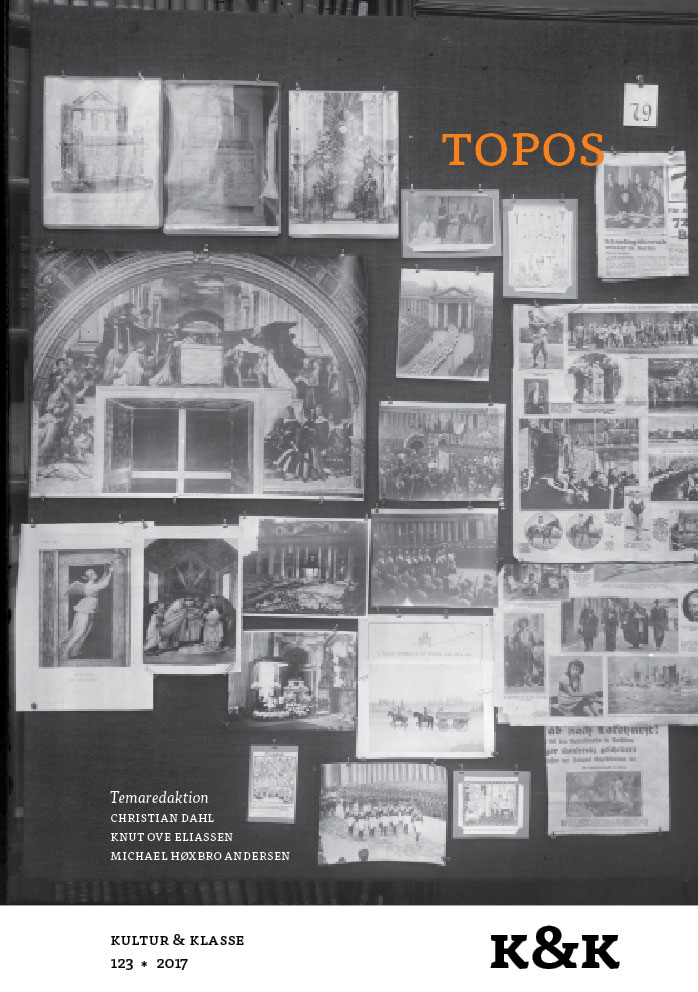Topos og motiv. Et forskningshistorisk rids
DOI:
https://doi.org/10.7146/kok.v45i123.96827Nøgleord:
topos, motiv, kliché, kontekst, kronotop, Curtius, Goethe, retorik og litteraturkritikResumé
The aim of this article is to clarify how literary topology relates historically and conceptually to the study of literary motifs. Topos and motif are associated concepts in literary theory, but attempts to define and compare them are evasive and few. While literary topology was, according to Ernst Robert Curtius, founded on the basis of classical rhetoric and concerned primarily the literary tradition of rhetorical eloquence, the notion of motif was, as I will argue, on the contrary conceived as a critical term at a time when rhetoric was loosing its grip on literary criticism at the end of the 18th century. My article will survey a number of influential positions in the history of literary theory and criticism concerning the study of motifs and topoi from Goethe to contemporary contextualist approaches.Referencer
Aristoteles. Retorik. København: Museum Tusculanum, 1983.
Baeumer, Max L. Toposforschung. Darmstadt: Wissenschaftliche Buchgesellschaft, 1973.
Bakhtin, Mikhail. Rum, tid & historie. Kronotopens former i europæisk litteratur. Aarhus: Klim, 2006.
Barthes, Roland. Kærlighedens forrykte tale. København: Politisk Revy, 1985.
Burke, Kenneth. A Grammar of Motives. New York: Prentice-Hall, 1945.
Burke, Kenneth. A Rhetoric of Motives. New York: Prentice-Hall, 1950.
Curtius, Ernst Robert. ”Zur Literarästhetik des Mittelalters I-III”, Zeitschrift für Romanische Philologie (1938), s. 1-50, 129-232, 433-479.
Curtius, Ernst Robert. Europäische Literatur und lateinisches Mittelalter. Bern: Francke, 1948.
Curtius, Ernst Robert. ”Historisk topik”, K&K 123 (2017): s. 13-22.
Gelley, Alexander. ”Ernst Robert Curtius. Topological and Historical Method”, MLN (1966), vol. 81, nr. 5, s. 579-594.
Goethe, Johan Wolfgang. Maximen und Reflexionen. Werke, bind 42/2. Weimar, 1907 (opr. 1829-33).
Gulddal, Jesper. Litterære pasregimer. Bevægelseskontrol og identifikation i europæisk litteratur 1725-1875. København: Museum Tusculanum, 2008.
Diderot, Denis & d’Alembert, Jean le Rond. Encyclopédie ou Dictionnaire raisonné des sciences, des arts et des métiers. Bd. 10. Paris, 1765.
Gumbrecht, Hans Ulrich. In 1926: Living on the Edge of Time. Cambridge, MA: Harvard University Press, 1998.
Frenzel, Elisabeth. Motive der Weltliteratur. Stuttgart: Kröner, 2008 (opr. 1976).
Lessing, Gotthold Ephraim. Laokoon oder Über die Grenzen der Malerei und der Poesie. Stuttgart: Philipp Reclamm, 1994 (opr. 1766).
Meiner, Carsten. Le carrosse littéraire et l’invention du hasard. Paris: PUF, 2008.
Mölk, Ulrich. ”Das Dilemma der literarischen Motivforschung und die europäische Bedeutungsgeschichte von ’Motiv’”. Romanistisches Jahrbuch, bd. 42, (1991) 91-120.
Mölk, Ulrich. ”Motiv”. Ästhetische Grundbegriffe, Bd. 4. Stuttgart/Weimar: Metzler Verlag, 2002, s. 225-234.
Rousseau, Jean Jacques. Dictionnaire de musique. Amsterdam, 1768.
Rømhild, Lars Peter: Slags. Om litterære arter, genrer og motiver. Viborg: Gyldendal, 1986.
Seidel, Siegfried (red.). Der Briefwechsel zwischen Goethe und Schiller. Bd 1: Briefe der Jahre 1794-1797. Leipzig: Beck, 1984.
Thompson, Stith. Motif-Index of Folk-Literature: a classification of narrative elements in folktales, ballads, myths, fables, medieval romances, exempla, fabliaux, jest-books, and local legends. Revised and enlarged edition. Bloomington: Indiana University Press, 1955-1958. http://www.ruthenia.ru/folklore/thompson/
Weil, Michele. ”Comment repérer et définir un topos?” La naissance du roman en France: topique romanesque de L’astrée à Justine. Red. Nicole Boursier. Tübingen: Leiner, 1990. 123-137.
Downloads
Publiceret
Citation/Eksport
Nummer
Sektion
Licens
Tidsskriftet følger dansk ophavsret.





